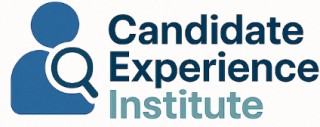
Understanding Candidate Experience
Understanding candidate experience is crucial in today’s competitive job market. It encompasses every interaction that a candidate has with a company during the hiring process. This not only includes the recruitment process itself but also how candidates feel about it. Maintaining a positive experience can significantly impact a company’s reputation and its ability to attract the best talent.
From the moment a job applicant encounters a job posting to the interview scheduling phase, candidates evaluate the professionalism and efficiency of a company’s process. With numerous companies employing sophisticated ATS platforms to manage their recruitment process, candidates have become accustomed to a certain standard of interaction. These tracking systems are more than just tools; they form the backbone of a seamless hiring process, enabling features like resume parsing and user-friendly interfaces.
In mid-sized companies, despite their limited resources compared to larger counterparts, maintaining a strong candidate experience is possible with the right applicant tracking system (ATS). Such systems streamline the recruitment process by efficiently managing job postings, tracking applicant data, and even integrating with job boards. This not only saves time but also ensures that the process is less laborious for both hiring managers and candidates. For more insight on how to enhance candidate experience, consider exploring enhancing candidate experience for ATS users.
Striking the right balance between technology and a personalized approach is key. Employers should be cautious of the potential drawbacks of over-reliance on such systems. A focus on the candidate’s journey can help companies design a recruitment process that minimizes drop-offs and ensures that the best talent is engaged and eager to join.
The Role of an ATS in Recruitment
Leveraging Technology in Recruitment
In today's competitive job market, companies are continuously seeking innovative ways to streamline their recruitment process. The integration of an Applicant Tracking System (ATS) has become increasingly significant in this context. This software is designed to simplify and enhance various aspects of the hiring process, ensuring a smoother experience for both recruiters and candidates.
An ATS serves multiple functions, making it a versatile tool for companies looking to improve their recruitment process. By automating tasks such as resume parsing and job postings management, an ATS significantly reduces the time and effort required to manage job applications. Additionally, it facilitates candidate tracking from the moment a job application is submitted to the final stages of the interview scheduling and potential hire.
The features of an ATS can be tailored to suit the needs of mid-sized companies. For instance, tools like Zoho Recruit offer user-friendly interfaces that simplify the tracking of candidates and management of job boards. These systems are particularly valuable for small businesses and teams that may lack the resources to handle large volumes of applicants manually.
Among the benefits of using an ATS is the ability to centralize and organize candidate information in a way that is accessible to all hiring managers. This consolidation facilitates more informed talent acquisition decisions. Moreover, with ATS platforms, companies can efficiently manage job descriptions, conduct internal analyses, and track the effectiveness of their recruitment strategies.
Age-old concerns about missing out on top talent due to human error are alleviated by these platforms. An ATS mitigates these risks by ensuring top candidates are not lost in the shuffle. For insights into how a recruitment dashboard can further enhance candidate experience and productivity within an ATS framework, exploring expert resources can provide valuable guidance.
Challenges Faced by Mid-Sized Companies
Challenges Encountered by Mid-Sized Organizations in the Recruitment Arena
Navigating the recruitment landscape poses unique challenges for mid-sized companies, especially those around the 200-employee mark. Balancing growth and efficiency is essential, yet it involves some hurdles. Here are a few key challenges these organizations face:- Inefficient Recruitment Processes: With expansion on the horizon, the traditional recruitment methods may not suffice. Manual handling of applications, from job postings to interview scheduling, becomes time-consuming and error-prone, affecting the consistency of the hiring process.
- Limited Resources: Unlike large corporations, mid-sized companies might not have ample budgets to invest in cutting-edge systems. This often results in juggling between multiple low-cost recruitment tools, which may not integrate seamlessly, impacting the overall recruitment process.
- Attracting Top Talent: Standing out to potential applicants is a challenge without a strong employer brand or extensive reach. Competing with larger companies on job boards can limit access to a pool of high-quality candidates.
- Managing High Volume Applications: As these companies grow, the influx of job applications can overwhelm their existing systems. Applicant tracking systems can lag, making it difficult for hiring managers to efficiently find and evaluate suitable candidates.
- Ensuring a Smooth Candidate Experience: The consistency and professionalism in interactions with candidates are often compromised without robust tracking systems, which can tarnish the company's reputation among potential hires.
Benefits of Implementing an ATS
The Advantages of ATS Implementation
When it comes to managing the hiring process for companies around 200 employees, implementing an ATS (Applicant Tracking System) can confer significant advantages. Here’s how your recruitment process might be enhanced by leveraging ATS software. One of the standout features of ATS platforms is their ability to streamline the hiring process. By automating many tasks related to job postings, resume parsing, and interview scheduling, hiring managers can save valuable time. This is particularly beneficial for smaller HR teams that need to focus on talent acquisition rather than manual tracking of candidates through spreadsheets. Moreover, an ATS system improves the organization of applicant data. With a centralized tracking system, you can efficiently manage all candidate information, making it easier to sift through resumes and identify the most qualified applicants. This can lead to better hiring decisions and, ultimately, a stronger workforce. Using ATS software also facilitates enhanced communication with candidates. Automated messaging tools within the platform can keep job seekers informed about their status in the recruitment process, improving the overall candidate experience and helping companies build a positive employer brand. Additionally, ATS platforms are often equipped with analytics tools that provide insights into the effectiveness of your recruitment strategies. By examining data from these tracking systems, hiring managers can refine their approaches, ensuring they are reaching the best talent available. This is essential for companies that aim to stay competitive in the job market. For mid-sized companies looking to improve their recruiting process, ATS platforms offer not just efficiency, but also the potential to elevate the quality of candidate pools through features like integration with job boards and user-friendly interfaces. Ultimately, while there are potential drawbacks to consider, such as the cost of implementation and the learning curve associated with new systems, the benefits of adopting an ATS system could far outweigh these challenges. Aligning with best practices in technology can be the key to outpacing competitors in the race for top talent.Potential Drawbacks of Using an ATS
Considering the Drawbacks of Employing an ATS
While Applicant Tracking Systems (ATS) offer numerous advantages in recruitment, it's crucial to weigh the potential drawbacks before integrating them into your company's hiring strategy. Understanding these challenges can help your team make well-informed decisions that align with your business goals. First, it's important to recognize that implementing ats platforms often involves a significant upfront investment of both time and financial resources. For small businesses or companies with limited budgets, this can be a critical factor in decision-making, as initial costs can be substantial. Additionally, adapting to new systems may require training for hiring managers and staff to effectively use software features and tools. Moreover, ats software may sometimes result in a less personalized candidate experience, as automation can make the process feel impersonal. Job applicants might perceive automated responses and system-generated communications as lacking the human touch essential in the recruitment process. Therefore, it's imperative to strike a balance between efficiency and maintaining an engaging candidate experience. There is also the risk of overreliance on these systems to the detriment of recruiting diverse talent. An ats system is only as good as its programming, and if resume parsing algorithms aren't finely tuned, they may inadvertently filter out suitable candidates based on keywords, rather than overall qualifications or potential for success. Finally, despite the advancements in technology, challenges in integrating new systems with existing platforms can pose operational issues. Compatibility with current software, especially for midsized companies already using other job boards or recruiting tools, can be a concern. It is vital then to ensure that your chosen ats integrates seamlessly with your current systems to prevent any interruptions in the hiring process. By carefully examining these potential drawbacks, companies can be better equipped to decide whether the benefits of an ats outweigh the challenges in the context of their specific recruitment goals and needs.Making the Decision: Is an ATS Right for You?
Evaluating Your Company's Needs
When deciding whether an ATS is the right fit for your company, especially one with around 200 employees, it’s crucial to evaluate your specific needs. Consider the current state of your recruitment process. Are your hiring managers overwhelmed by the volume of resumes? Is tracking candidates through multiple stages of the hiring process becoming a challenge? If the answer is yes, an ATS might be a beneficial investment.
Assessing the Benefits
Implementing an ATS can streamline your recruitment efforts by automating resume parsing and interview scheduling. This not only saves time but also enhances the overall candidate experience by ensuring timely communication. Additionally, ATS platforms often integrate with job boards, making job postings more efficient and broadening your reach for top talent.
Considering the Drawbacks
On the flip side, some ATS systems can be costly and may require training for your team to fully utilize their features. It's essential to weigh these potential drawbacks against the benefits. Evaluate if the software is user-friendly enough for your team and whether it aligns with your company's culture and recruitment goals.
Making an Informed Decision
Ultimately, the decision to implement an ATS should be based on a comprehensive analysis of your recruitment needs and challenges. Consider conducting a cost-benefit analysis to determine if the investment in an ATS software will provide a significant return in terms of efficiency and quality of hire. Remember, the best systems are those that align with your company's size, industry, and long-term talent acquisition strategy.












